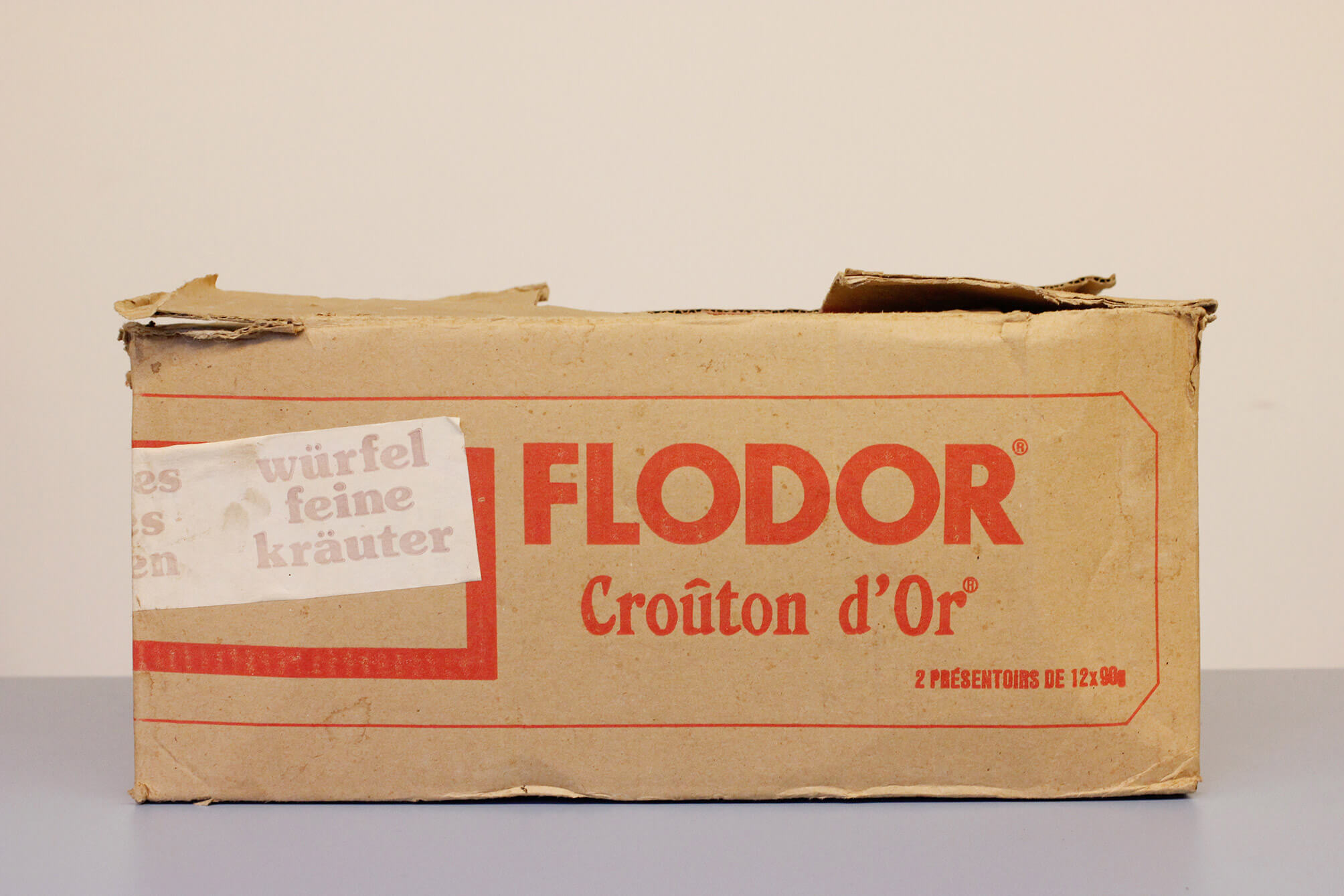What constitutes a ‘document’ and how does it function?
According to the Oxford English Dictionary, the etymological origin is the Latin ‘documentum’, meaning ‘lesson, proof, instance, specimen’. As a verb, it is ‘to prove or support (something) by documentary evidence’, and ‘to provide with documents’. The online version of the OED includes a draft addition, whereby a document (as a noun) is ‘a collection of data in digital form that is considered a single item and typically has a unique filename by which it can be stored, retrieved, or transmitted (as a file, a spreadsheet, or a graphic)’. The current use of the noun ‘document’ is defined as ‘something written, inscribed, etc., which furnishes evidence or information upon any subject, as a manuscript, title-deed, tomb-stone, coin, picture, etc.’ (emphasis added).
Both ‘something’ and that first ‘etc.’ leave ample room for discussion. A document doubts whether it functions as something unique, or as something reproducible. A passport is a document, but a flyer equally so. Moreover, there is a circular reasoning: to document is ‘to provide with documents’. Defining (the functioning of) a document most likely involves ideas of communication, information, evidence, inscriptions, and implies notions of objectivity and neutrality – but the document is neither reducible to one of them, nor is it equal to their sum. It is hard to pinpoint it, as it disperses into and is affected by other fields: it is intrinsically tied to the history of media and to important currents in literature, photography and art; it is linked to epistemic and power structures. However ubiquitous it is, as an often tangible thing in our environment, and as a concept, a document deranges.
the-documents.org continuously gathers documents and provides them with a short textual description, explanation,
or digression, written by multiple authors. In Paper Knowledge, Lisa Gitelman paraphrases ‘documentalist’ Suzanne Briet, stating that ‘an antelope running wild would not be a document, but an antelope taken into a zoo would be one, presumably because it would then be framed – or reframed – as an example, specimen, or instance’. The gathered files are all documents – if they weren’t before publication, they now are. That is what the-documents.org, irreversibly, does. It is a zoo turning an antelope into an ‘antelope’.
As you made your way through the collection,
the-documents.org tracked the entries you viewed.
It documented your path through the website.
As such, the time spent on the-documents.org turned
into this – a new document.
This document was compiled by ____ on 21.10.2022 15:50, printed on ____ and contains 23 documents on _ pages.
(https://the-documents.org/log/21-10-2022-4830/)
the-documents.org is a project created and edited by De Cleene De Cleene; design & development by atelier Haegeman Temmerman.
the-documents.org has been online since 23.05.2021.
- De Cleene De Cleene is Michiel De Cleene and Arnout De Cleene. Together they form a research group that focusses on novel ways of approaching the everyday, by artistic means and from a cultural and critical perspective.
www.decleenedecleene.be / info@decleenedecleene.be - This project was made possible with the support of the Flemish Government and KASK & Conservatorium, the school of arts of HOGENT and Howest. It is part of the research project Documenting Objects, financed by the HOGENT Arts Research Fund.
- Briet, S. Qu’est-ce que la documentation? Paris: Edit, 1951.
- Gitelman, L. Paper Knowledge. Toward a Media History of Documents.
Durham/ London: Duke University Press, 2014. - Oxford English Dictionary Online. Accessed on 13.05.2021.

The two photographs arrived in Belgium inside a used hardback1 in spring 2016, though it is unclear how long before that time they were actually taken.2
Photograph #1 measures 151 x 100 mm and shows two young people who appear to be mountain climbing and captured while clearing a ridge. Behind the two subjects a bluish mountainous landscape is vaguely visible, suggesting a vantage point of some considerable elevation. The person on the left is wearing a white T-shirt and a bracelet, and has several earrings. The person on the right is carrying a backpack. What appears to be a black tank-top may in fact also be the straps of the pack. On their head they wear what appears to be a grey T-shirt or other garment, presumably to protect the subject from the sun; this person also has earrings and is wearing a necklace and sunglasses. The weather appears nice, both subjects are smiling and appear relaxed. The effort may well have been staged.
Photograph #2 measures (approximately) 43 x 62 mm with the left, bottom and right sides appearing to be cut, rather unevenly, with scissors. It has the typical appearance of an American high school yearbook photo and shows a young person wearing a shiny black blouse and a necklace. They have blue eyes and below-shoulder length auburn hair. The red lips appear painted. On the back of this photograph is written in a clearly legible hand:
Clay, I can’t
wait until next
year when we’re
in grade 12!3
Have a great
Summer and
call me [XXX XXXX]4
by the way, I haven’t
forgot about how big UR
The only assumptions to be made somewhat safely from these two items are that (a) the book has once belonged to ‘Clay’, and, (b) a relationship of a close, friendly, perhaps even intimate, nature has at one time existed between ‘Clay’ and the person in the second photograph (assuming also that (c) the note on the back of the second photograph was indeed written by the person in that photograph). The circumstances surrounding, and/or motivations (‘Clay’’s or any third parties’) behind the book’s ending up in a used-book shop5 must necessarily remain a matter of speculation. There are no reasons to assume that the book was gifted to ‘Clay’ by the note-writer (or by anyone else) as no dedication appears in it.6 It must also remain inconclusive whether there are either two or three different persons appearing across the two photographs, and whether any of these is in fact ‘Clay’.
Indeed, the number of questions raised by these items far exceeds the number of answers they provide. Even leaving aside the nature of the writings in the book, one cannot help but speculate as to:
— how much, if any, of the book ‘Clay’ ever read;7,8
— what happened to the CD originally included with the book;9
— why the unrelated inserted materials were not removed from the book before sale (as opposed to the CD);
— whether ‘Clay’ did in fact ring up the writer of the note over that summer;10 indeed whether the two ever did meet again, remain close during their ‘senior’ year, perhaps even stay in contact after graduating;
— the meaning of the rather cryptic final line of the note.
The book is a first edition, first printing hardback copy of Word Virus: the William S. Burroughs reader, edited by James Grauerholz and Ira Silverberg, with an introduction by Ann Douglas, published by Grove Press (New York) in 1998 (160mm x 235mm, 532pp.). On the used book aggregator webstore, the book was graded ‘Very Good’ (or, VG),* which proved a realistic assessment as it appeared (in fact, still does) largely unread with a dust jacket in equally good condition and no markings inside whatsoever. In fact, the book’s condition might well have warranted a ‘Fine’ (F) grading were it not for the only notable (yet not noted) defect, which was that the ‘Spoken Word CD’ that was originally included — as indicated by a 32mm diameter round sticker in the top right corner of the front of the dust jacket, and the glued-in envelope in the back of the book — was no longer present. This defect may well have accounted for the apparent disparity between the state and grading of the book and the low price of $4.53 (shipping not included) it was sold at, although the fact remains that this incomplete state ought to have been mentioned in the listing. Since the time of purchase, however, markings were added to the book, presumably with an additional adverse effect on its market value: appearing on the half-title page, they are in dark green crayon and of an abstract nature and were made by the current owner’s infant son.
* According to the terminology of the grading scale proposed in 1949 by AB Bookman’s Weekly and still widely, if not universally, in use in the online used book market today, albeit with some additions or modifications by individual platforms. See Wikipedia for a brief overview.
Elements of style and physical nature of the artifacts may be taken to indicate an origin roughly contemporaneous with the book.
‘[In the United States of America, the] twelfth grade is the twelfth school year after kindergarten. It is also the last year of compulsory secondary education, or high school. Students are often 17–19 years old. Twelfth graders are referred to as Seniors.’ (Wikipedia)
A 7-digit phone number, without country or area code, redacted here.
Located in the state of Nevada, no further identification of the particular shop was provided on the aggregator webstore, and it must be noted that the book was subsequently shipped from ‘Auburn’, presumably Auburn, CA.
Indeed in accordance with its ‘Very Good’ grading, which is generally understood to explicitly list any defects such as markings (including dedications) but also any missing materials.
Quality hardbacks being notably easier to read without damaging the book.
Speculations on this, and any potential subsequent extrapolations are, fortunately perhaps, further inhibited by the fact that the book presents a rather generous cross-section of writings spanning the entirety of William S. Burroughs’ famously prolific career. The inclusions span the period between 1929 and 1994. Although undertakings of this kind will inevitably meet with criticism, the consensus indeed seems to be that the editors have done an excellent job in selecting and presenting the material. Was ‘Clay’ mainly drawn by the hard-boiled straightforward prose style of the early novels; the highly experimental and provocative writings of the ‘middle period’ (traditionally labeled as rather ‘hermetic’ and ‘cold’, though they are quite often not without a haunting, perhaps even ‘poetic’ quality); or the later, one might say ‘integrated’ style which saw the earlier experiments wedded to a certain ‘return to narrative’ and, in old age, traces of a much more ‘humane’ author than ever before (if a point of critique may yet be formulated, one might indeed say that the writings from this later period (roughly 1978–1997) are somewhat favoured (quantitatively) in the Word Virus volume; as these have a (still: relatively) greater ‘readability’ than much of the older material that may indicate a decision of a commercial nature, yet there is also the fact that these texts were written in collaboration with one of the editors of Word Virus)?
Being in fact a promo sampler for the 4CD Giorno Poetry Systems compilation of William S. Burroughs material also released (by Mouth Almighty Records and Mercury Records) in 1998. See Discogs.
Nevada has three area codes (702, 725, and 775), yet quick Google searches of the 7-digit number combined with any one of those yield no easy identification. Considering the overall scarcity of information, however, it seems clear that anyone seeking to reconstruct the biographies of ‘Clay’ and/or the note-writer should take up this line of investigation.
David Depestel hesitates in trying to make something of himself; a character, a profession, a fixed mode of being, are for him concepts that already shadow forth the outlines of the skeleton, which is all that will be left of him in the end.
https://en.wikipedia.org/wiki/List_of_used_book_conditions
https://en.wikipedia.org/wiki/Twelfth_grade#United_States
https://www.discogs.com/release/673857-William-S-Burroughs-Selections-From-The-Best-Of-William-Burroughs-From-Giorno-Poetry-Systems
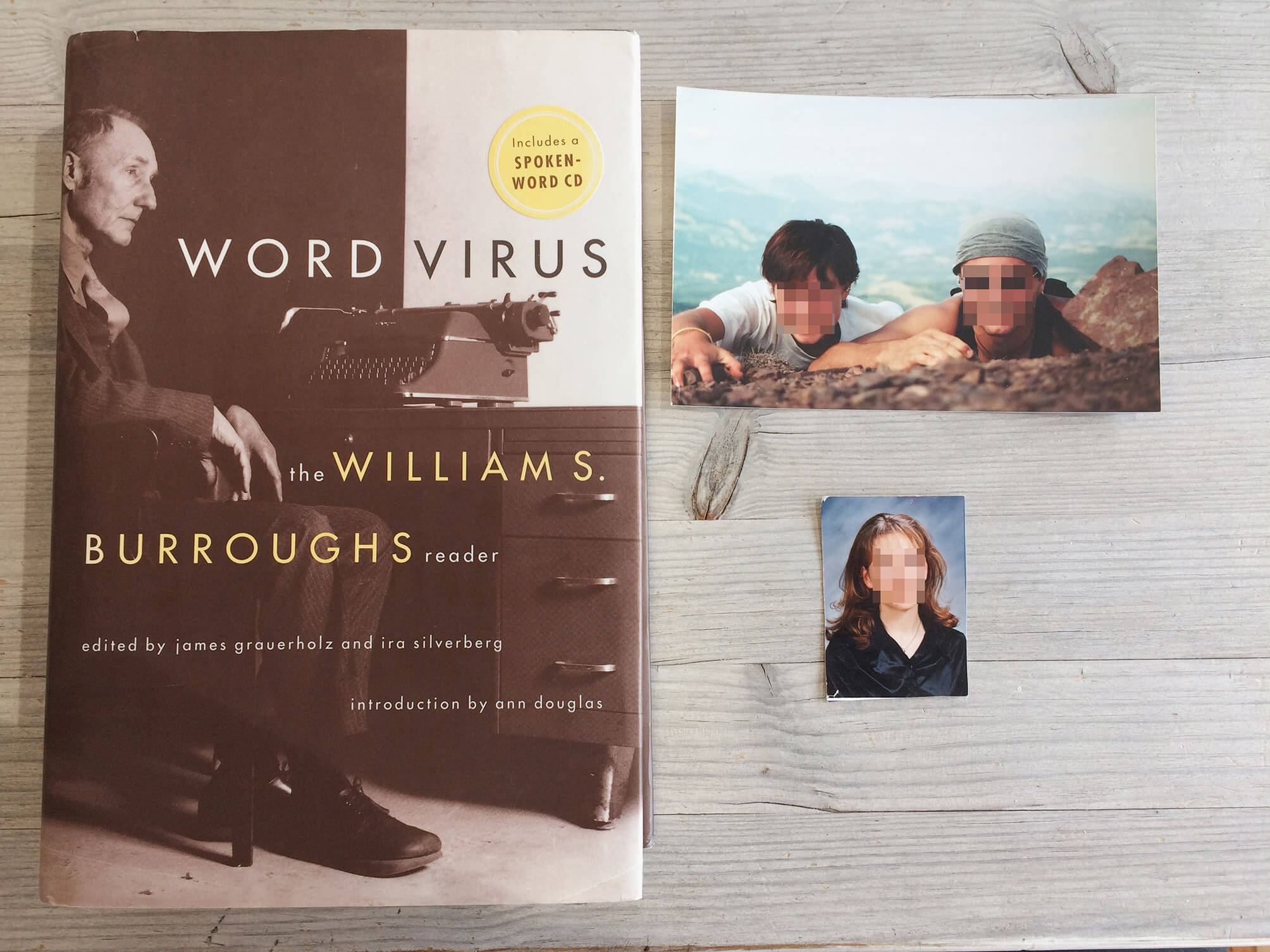

As we point the telescope to the sky – cloudy, and filled with chaotic bursts of rain – the dispersion of the city lights accentuates the swirling, frantic raindrops. The roof we are standing on is uneven. A puddle forms underneath the apparatus, around the right leg of the tripod and our feet. The sound of a car on a wet street, below. A kitchen light is flicked on. Temperature is low for a mid-September night, and getting lower by the minute. It seems impossible to tell the depth of field we are documenting, and at what distance from our position these fleeting constellations occur.
Excerpt from Towards Civil Dusk (De Cleene De Cleene, 2020)
Neptune in opposition [1-20] is part of ‘Documenting Objects’, a research project by Arnout De Cleene and Michiel De Cleene at KASK & Conservatorium, the school of arts of HOGENT and Howest. Their research is financed by the HOGENT Arts Research Fund. Previous research into this subject has amongst other things led to the documentary film Towards Civil Dusk and temporary public observatories at 019, Gent and Kunsthal Extra City, Antwerp.
Thanks to:
Angelo Van Daele
Arthur Haegeman
Chris De Pauw
Emi Kodama
Frédéric Thill
Gentil Van de Vijver
Guy Wauters
Hannah De Cleene
Jan Scheers
Jonas Temmerman
John Sussenbach
Kunsthal Extra City
Philippe Molet
019
Astropolis (Oostende)
Cercle Astronomique Mosan (Herbuchenne)
Koninklijk Observatorium Ukkel
Observatoire Astronomique Antoine Thomas S.J. (Namur)
Observatoire Astronomique Centre Ardenne (Grapfontaine)
Publieke Sterrenwacht van de Westkust (Koksijde)
Volkssterrenwacht Armand Pien (Gent)
Volkssterrenwacht AstroLAB IRIS (Zillebeke)
Volkssterrenwacht Beisbroek (Brugge)
Volkssterrenwacht Mira (Grimbergen)
Volkssterrenwacht Urania (Hove)

An observer draws on experience, and instantly sees a female partridge. Cumulus clouds. The Southern pole star. It’s the ‘all-at-once-ness of virtuoso perception’, Lorraine Daston writes: ‘Sure, swift, and silent, “without pause for mental analysis,” observation is grounded in long familiarity with the phenomena in question, be they curlews or streptococcus bacteria’ (101).
Excerpt from Towards Civil Dusk (De Cleene De Cleene, 2020)
Daston, L. ‘On Scientific Observation’. Isis, 99 (1), 2008, 97-110.
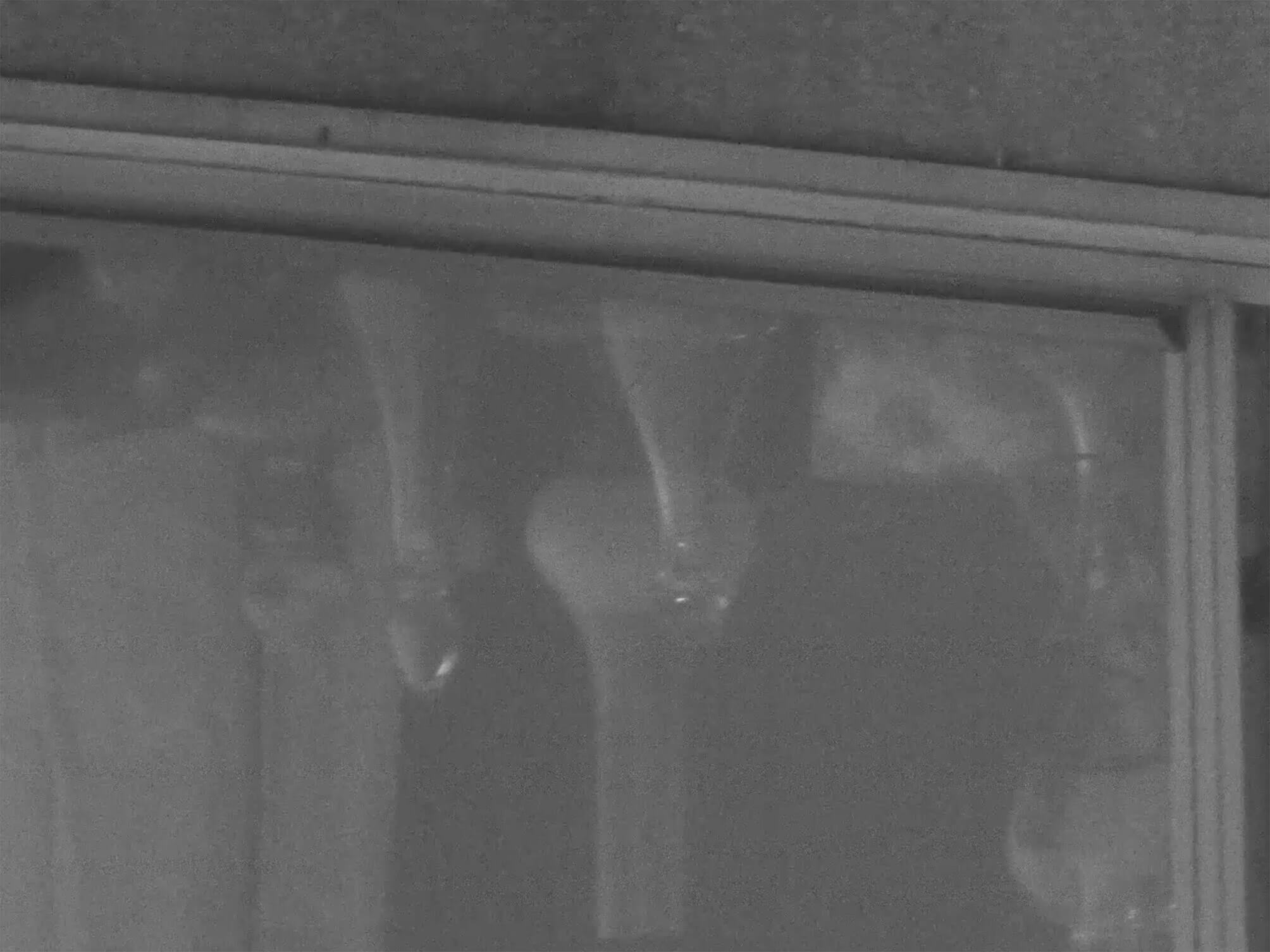
In Six Stories from the End of Representation, James Elkins writes: ‘Astrophysicists are well practised in “cleaning up” photographic plates by adjusting colour and contrast, removing images of dust, correcting aberrations, restoring lost pixels, and balancing uneven background illumination. When it comes to blur, the usual strategy is to specify what counts as “smooth” and what counts as “pointlike,” and then refine the image until it exhibits the required pointlike properties’1. Still, some astronomic images keep a certain amount of blur (although it would be technically possible to delineate them). Elkins continues: ‘blur does not need to be a matter of distance from some hypothetical optimal clarity: it can be a functional scale, independent of the viewer’s notions of clarity and even of the image itself’2.
On the night of 22 November 2021, I join John Sussenbach in his backyard while he captures Neptune.
He invites me to join him and his wife for dinner. A prayer. Soup and bread. The images he makes, he explains, are complex from a temporal point of view. The light coming from Neptune has travelled for four hours before it reaches us. Moreover, these images are not photographs of a singular moment, but stacked frames of a video-recording. In doing so, he can, to some extent, eliminate the effects of a bad ‘seeing’: the negative effect atmospheric turbulence has on the light that reaches the telescope.
A bright dot is jumping around on his laptop’s screen. ‘That’s Neptune’, he says. With his index finger he follows the dot. ‘That’s the bad seeing. That’s the unrest.’
The next day I send him the photograph I took of him standing on his ladder, dangerously placed on the edge of the tarp covering his pool. ‘Nice to see the open star cluster Pleiades in your photograph’, he replies. He attaches the image he made that night: ‘If there would have been a clear storm on Neptune, it would have shown’.
Image by John Sussenbach. 22 November 2021 19.00 UT North up
C14 f/11 and ASC462MC camera plus ADC, Houten (NL)
Elkins, J. Six Stories from the End of Representation. Images in Painting, Photography, Astronomy, Microscopy, Particle Physics, and Quantum Mechanics, 1980-2000. Stanford: Stanford University Press, 2008, 59.
Ibid., 62-63.
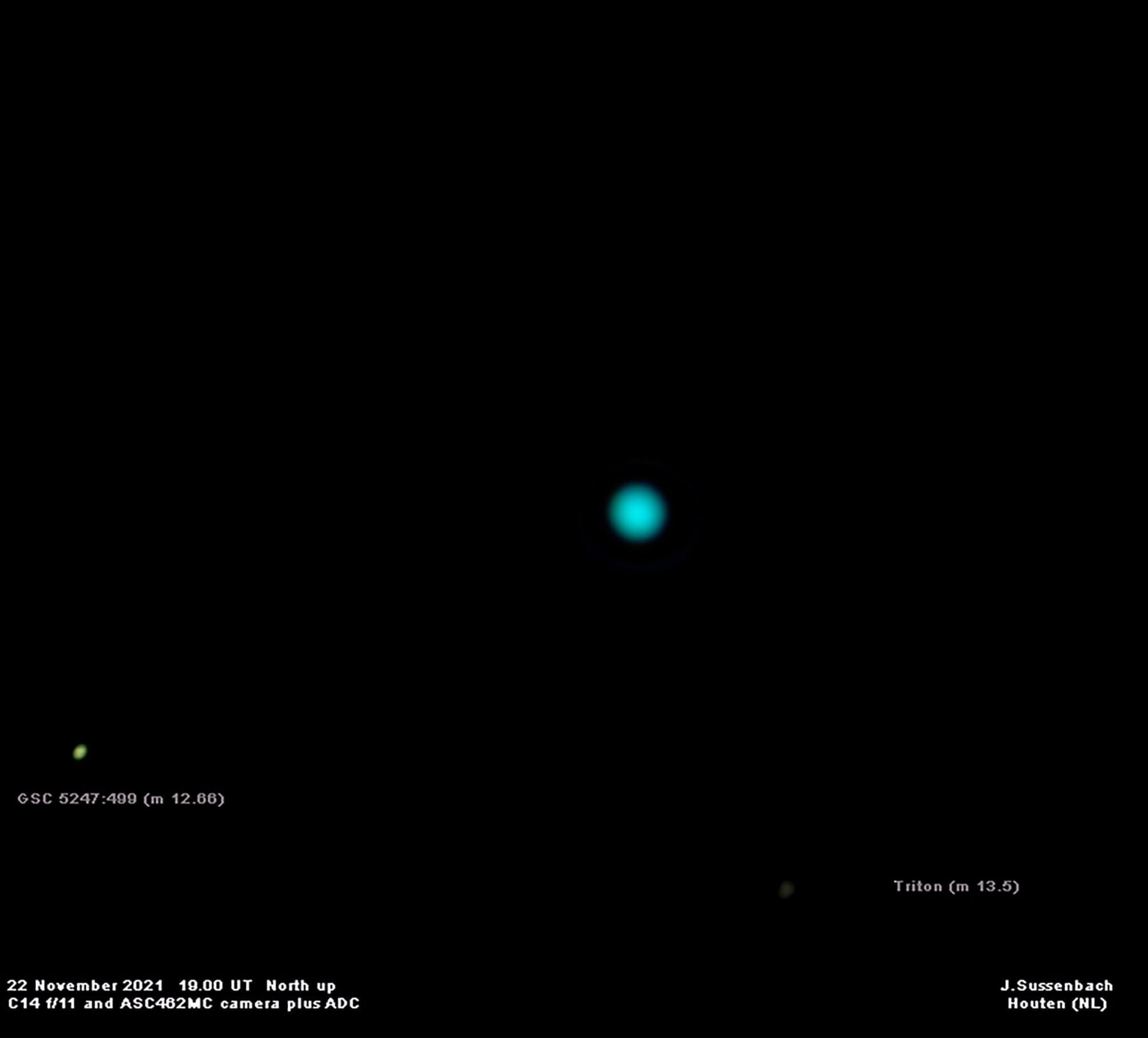

Summer 2019, between the swingset and the mesh greenhouse, astrophotographer Angelo Van Daele closes the observatory. The wheels roll smoothly across the rails embedded within a concrete slab. His former observatory is now a chicken coop. His neighbour’s trees need pruning. The camera mounted on the exterior of the shed allows him to see the instrument from inside the house.
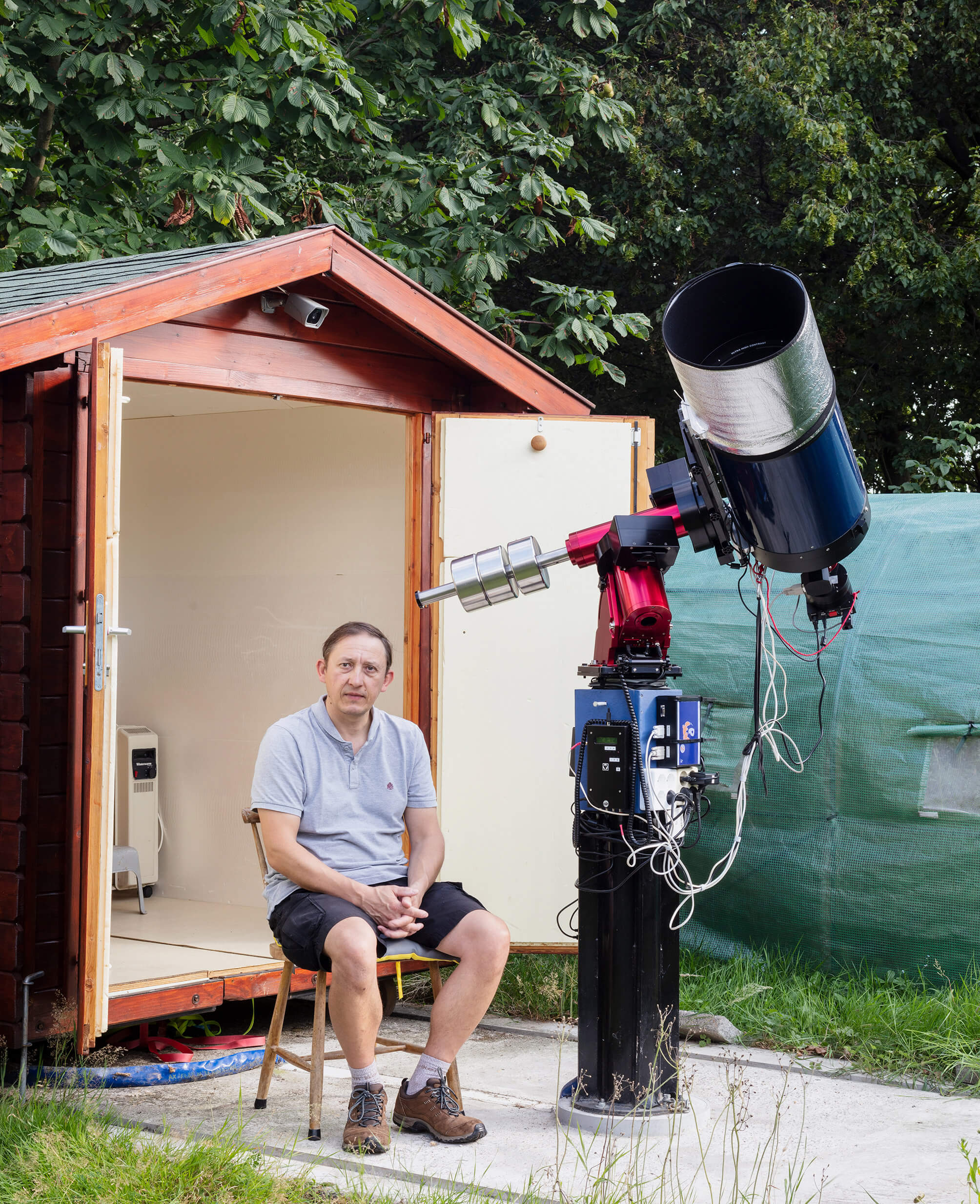
The orthopaedic surgeon left early that morning for his shift at the hospital some twenty kilometres away. It must have been around the time Neptune was at its highest, invisible in the morning sky.
When he got back later that day, we attached a tow cable to the front of my car and the back of his.


Theory becomes the apparatus. A metonymic relation. A trope of nearness. Miniscule gravitational disturbances become known as a kilometres-long, L-shaped facility. Particle physics: a circular tunnel beneath the Geneva hinterland.
Somewhere in the early 1970s, our grandfather, a carpenter by trade, buys a telescope1,2, installs it on the lawn, and points it over the hedge. ‘I remember seeing the craters on the moon. The rings of Saturn,’ he told us.
In the shabby plywood box I made to transport the telescope lies a metal ring I ground flat to be able to attach my camera and focus it on infinity.
The hedge, now three metres in height, shields the lower part of the sky from sight and needs pruning.
Tasco / Reg. No. 83140 / 140 Power / Reflection telescope / D=3” / F=700mm / Coated optics / Model No. 3TE-R / Japan
‘It never fails to draw you in closer – the moment when you raise a pair of binoculars to your eyes. In that instant, life is magnified clearly; as if just for you. The curious bird that becomes instantly identifiable. The night sky that never looked the same after that night. The actual sweat running down the brow of a sports hero. The sun scattering light across a clear stream as you trace for signs of a Rainbow trout. These are the moments of magic that Tasco delivers. Simple, pure and honest. And for another split-second, you’re struck by the quality of experience weighed against the value you’d previously placed on “just a pair of binoculars.” Welcome to a world where, “Seeing is Believing.”’ (Tasco Manifesto).

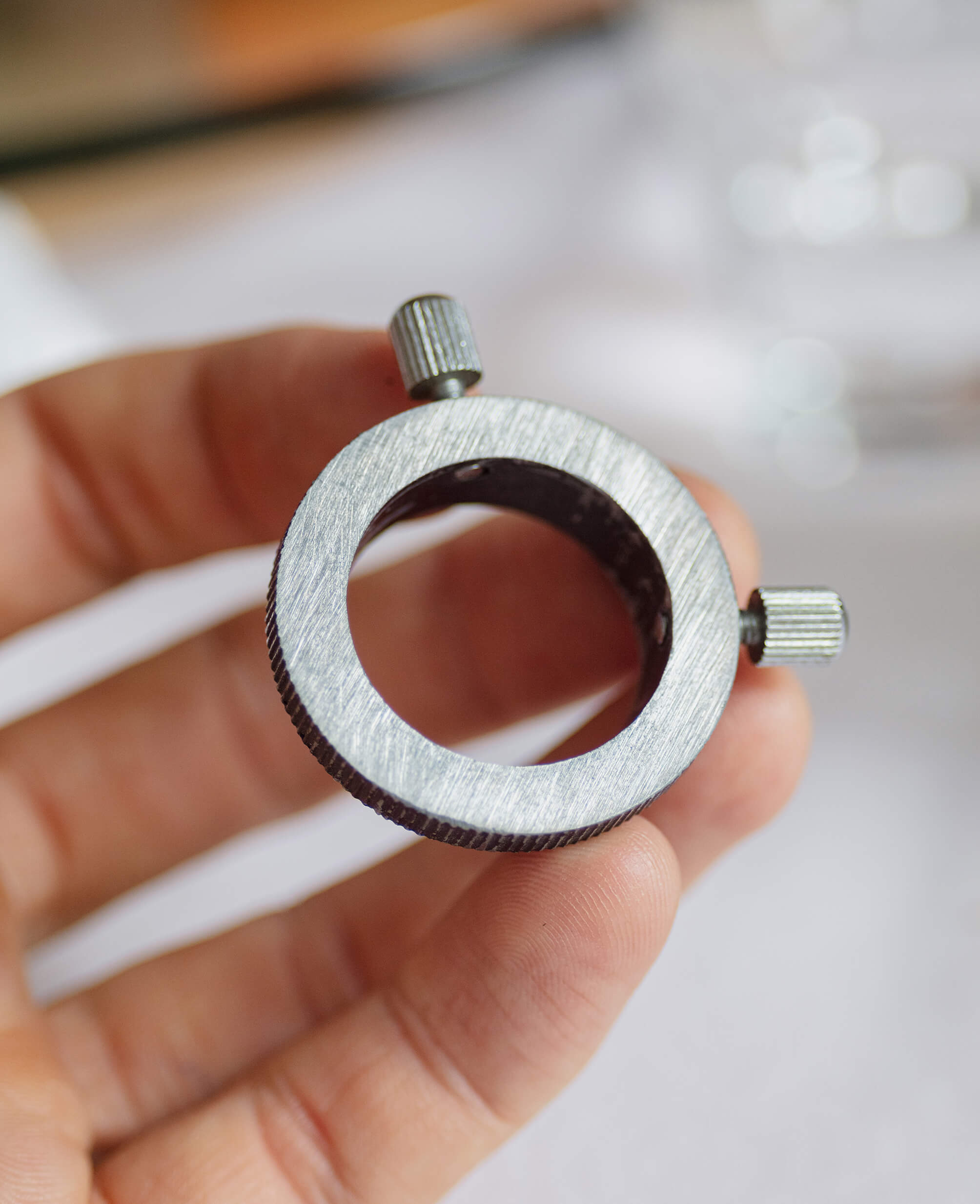
It is said that ‘if a space traveller were unfortunate enough to enter the atmosphere of one of the giant planets [such as Neptune], he or she would not find a single solid surface. Instead, as he or she descended into the planet, our traveller would find that the temperature, pressure, and density would all continue to increase smoothly, with no sharp transitions. Assuming that he or she was adequately protected from the temperature, pressure, and radiation, our traveller would eventually “float” at that level in the atmosphere where the surrounding density and his or her own density were equal.’1
It is said that it storms on Neptune.
Violently.
1200 mph.
They observed a great dark spot and called it: The Great Dark Spot.
It rains diamonds on Neptune.
Miner, E.D. & R.R. Wessen. Neptune. The Planet, Rings and Satellites. Chichester: Springer-Praxis, 2002, p. 18.
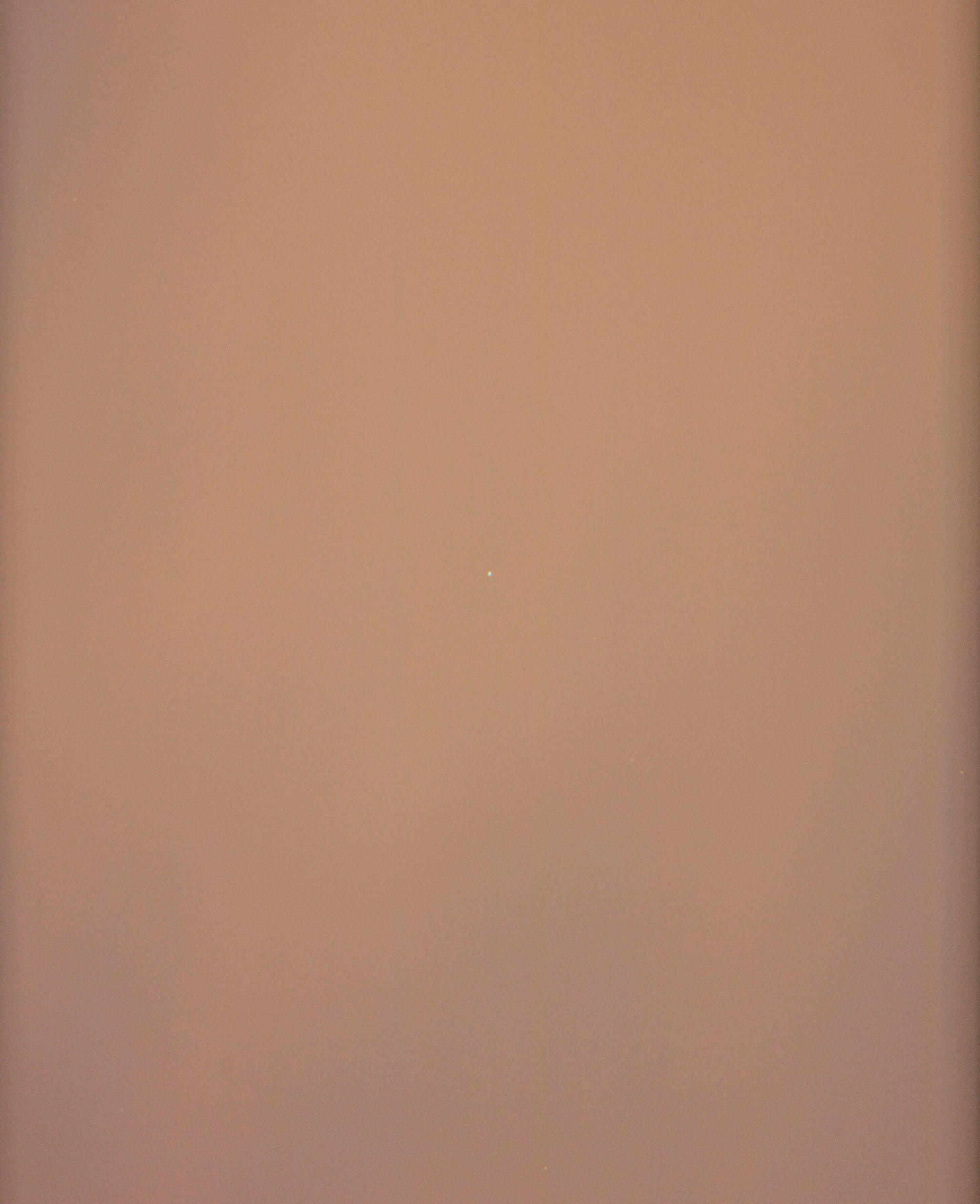
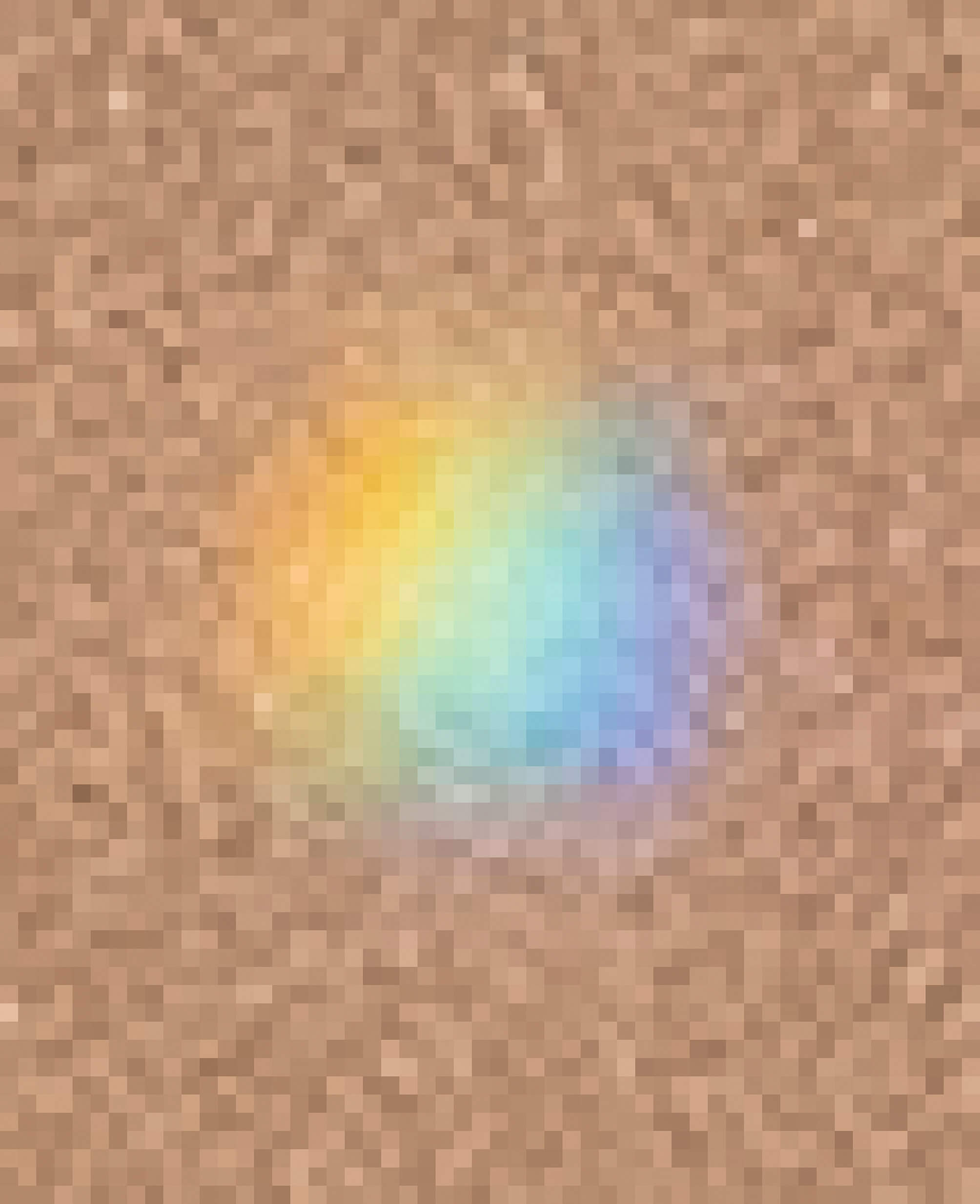
As an architectural structure, the pier is fundamental in observational astronomy: it can be found in the backyards of amateur observatories, as well as in professional ones. This column is a quintessential part of the physical interventions that are necessary to distinguish noise from valuable data. The pier disjoints the telescope from the observer, from the observatory and from the surroundings. Tremors of passing cars, the astronomer’s footsteps and coughs, the neighbour’s soundsystem: they could result in an agitated telescope. A falling mug would cause the instrument to shift lightyears away from its target.
In August 2019, I visited Chris De Pauw, an astrophotographer, at home. He showed me his private observatory. As we were both waiting for clouds to obscure the sun and get softer light for the photograph, he told me about the rolling shed, its advantages and the modifications he was planning on.
On closing the observatory – by rolling the shed over the instrument – he manoeuvred the instrument into its ‘park’-position: an azimuth of 160 degrees and an elevation of 8 degrees above the horizon. The shed’s doors and hinges barely cleared the telescope.

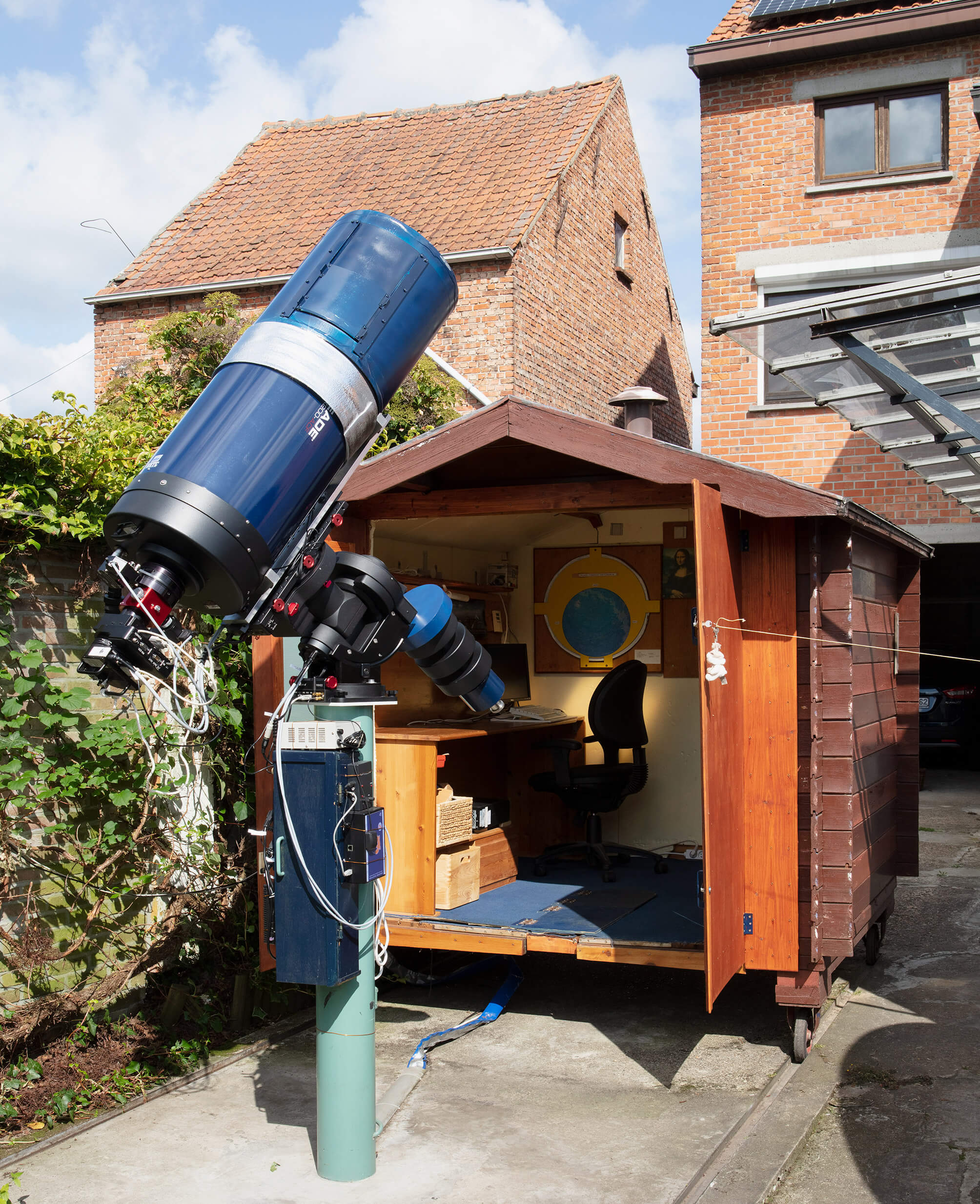
As the light of celestial objects travels through the Earth’s atmosphere, the various wavelengths that make up this light are refracted differently. This effect is called ‘dispersion’ and results in colour fringing on the edges of planetary discs: images with a sliver of blue at the top and a red one at the bottom appear.
When celestial objects are positioned close to the horizon (like Neptune when observed from Luxembourg) the images are severely affected: the path of the light through the atmosphere is longer, leading to greater dispersion.
For the same reason sunsets are red, Neptune turns from a monochromatic blue disc into a misaligned, multicoloured oval.


September 2020, three days before Neptune is in opposition, I meet Frédéric on top of a hill in Luxembourg.
Earlier that day he had sent me the coordinates of an airfield for remote controlled aeroplanes. He told me to meet him there at 20h. The airfield is situated on the top of a hill, granting a clear view of the horizon. Removed from highways and city centres, only the southern horizon lights up, where the Grand Duchy’s capital is located, some 15 kilometres farther. The weather is promising: ‘We might get a chance to see and photograph Neptune!’ he wrote.
I get there early. Frédéric is already setting up his tripod. Two elderly men are training for the perfect landing.

Here, on his kitchen table, Marcel Poulet, an expert on the stoneware tradition in the center of France, is explaining his archeological work on ‘whale ovens’.
I started collecting images and plans of ovens, for the beauty of those abstract technical lines and for what we can learn from them. In gathering the material that makes up this Atlas, and in sharing interests and knowledge, I learned that many people know about ovens, either in their homes, gardens, ateliers, factories, streets… Everyone transforms things through heat. Even bodies need warmth and produce some themselves.
Clementine Vaultier’s interests, although trained as a ceramist, are in the warm surroundings of the fire rather than the production it engenders.

This stack of seaweed was offered by Henning, a farmer of the wonderful island of Laeso. This matriarchal pirate island, north of Denmark, is known for its tradition of building roofs from the seaweed growing in the surrounding salty water. Back in time, women would harvest and slowly weave the material around wooden beams from shipwrecks. This time-consuming process and technique of building shelters from what comes from the sea engaged the population in working together, building a ritual around each construction. Then those wild, yet full-of-care roofs, conserved in salt, would last for hundreds of years.
When I arrived on his land, Henning told me about how he restores those old beauties, weaving fresh seaweed around old beams and pressing the collected old material into insulation panels for new buildings. We talked about the clay of his land and how seaweed can become a material for ceramics in the process of making glazes.
Clementine Vaultier’s interests, although trained as a ceramist, are in the warm surroundings of the fire rather than the production it engenders.

The Cryptolaemus montrouzieri is commonly known as the mealybug destroyer. This species of ladybird gets its nickname from its capacity to battle mealybugs in plantations and greenhouses.
The website waarnemingen.be that gathers observations of plants and animals in Belgium lists multiple observations in the wild of the Cryptolaemus montrouzieri. The website explains that ‘in (northern) Europe, the species is widely traded and used in greenhouses and will regularly escape from them. But this ladybird cannot survive our winters (yet?). Sightings within the Benelux must therefore be entered into the register as “escape”. However, the species is already established in the Mediterranean area.’ (our translation)
The larvae have a waxy covering that makes them look like the mealybugs they prey upon, allowing them to avoid being correctly identified by the ones they are about to devour.
In an attempt to get rid of the mealybugs on my plants, I ordered 25 adult ladybirds. They were dead on arrival.
https://waarnemingen.be/species/600135/
https://waarnemingen.be/observation/244840499/
https://en.wikipedia.org/wiki/Aggressive_mimicry
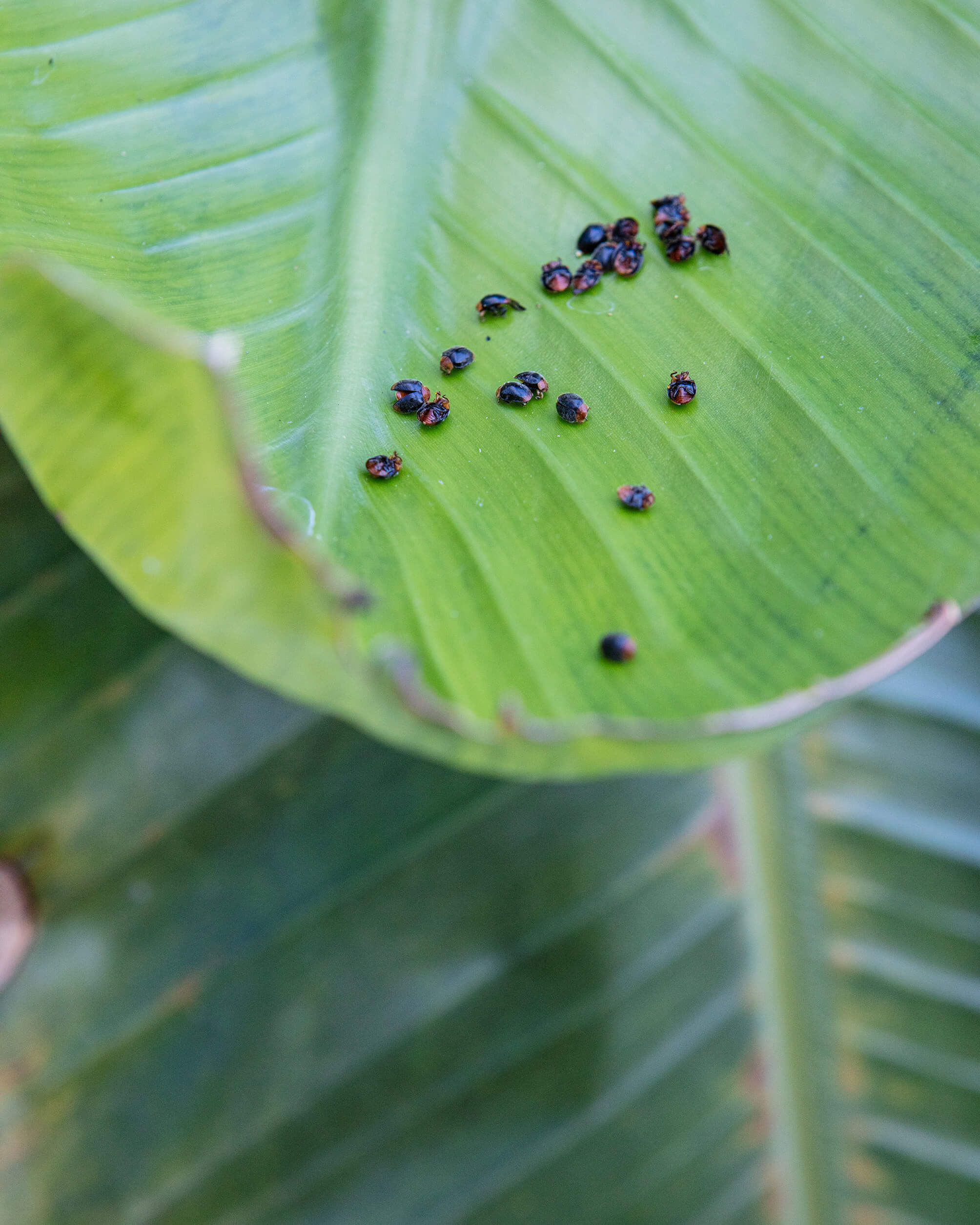
For about an hour, he has been saying ‘owl’ at regular intervals. A cartoon character he picked up somewhere and is now fantasizing about, I guess. Or a Disney reference in one of the songs that have been playing on repeat all day, in the car, driving home from holidays.
50 kilometers further, I recognize the birds in the high-voltage pylons along the highway.
According to the amateur experts at hoogspanningsforum.com, these French pylons – used for conducting electricity from 63kV to 400kV – are nicknamed ‘chats’: the wiring can be interpreted as feline whiskers.
Some genera of owls, such as the Megascops or Screech owls, have whiskers.

While I was sitting in the laundromat one evening waiting for my laundry to finish its cycle, La Isla Bonita by Madonna came on the radio. Competing with the rustle of seven rotating laundry machines, the song reminded me of a T-shirt that was now being washed.
The short phrase in the song’s lyrics ‘last night I dreamt of San Pedro’ would nestle itself somewhere in the back of my head and bubble up every now and again for no particular reason. I made this shirt for the occasion of Valentine’s Day in 2019 to commemorate my friendship with Jan-Pieter. I remember once mumbling the lyrics to La Isla Bonita, replacing ‘San Pedro’ for ‘Juan Pedro’, forgetting it for some time and then a while later printing it on a T-shirt.
Tjobo Kho is a graphic designer and publisher based in Amsterdam. Since 2017 part of the floating collective and publishing platform OUTLINE, and recently started his own publishing house no kiss?.
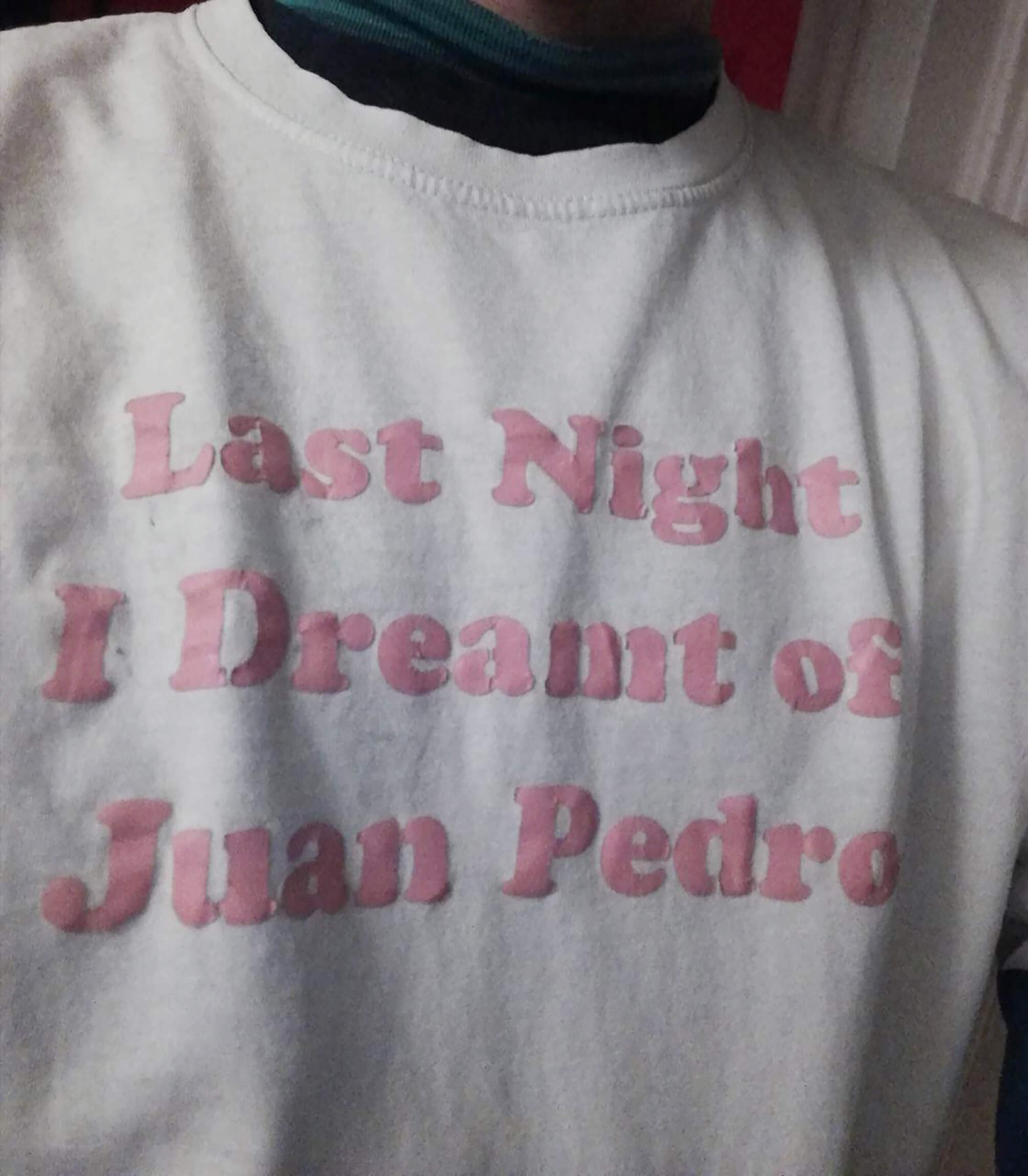
‘Submission for an art project named the-documents.org’ is a collection of 9 images1 generated by DALL·E mini2, an open-source AI model, on the basis of the prompt ‘Submission for an art project named the-documents.org’.
DALL·E mini is a freely available AI tool that generates images based on a description of the desired image (a prompt) provided by a user.
Though DALL·E mini seems to be primarily used as a source of humour within the online community – being able to create a set of images from any specific or abstract prompt – it also gives rise to more serious questions on AI ethics and copyright. As the model is trained with unfiltered data from the internet, it may reinforce societal biases, generating images that contain stereotypes against minority groups. DALL·E mini and similar, more advanced tools, are also capable of creating art ‘in the style of’ when they have sufficient data to source from (e.g. using a prompt as “Van Gogh painting the Eiffel Tower”). This leads to the legal and ethical question whether an artist should have a say in the use of his/her artwork as AI input data, and whether the artist should be able to claim rights for AI generated images based on this data.

DALL·E mini was created by Boris Dayma et al. 2021-2022, https://huggingface.co/spaces/dalle-mini/dalle-mini, to be migrated to www.craiyon.com
Ward Verwaeren is a legal counsel in the tech industry, and former IP lawyer. He tries to know more about art than the average lawyer, and more about law than the average artist.

At the beach of Cap d’Antifer in Normandy one can find ‘sea glass’ between the pebbles: pieces of broken glass that have naturally weathered by being tumbled by the ocean, over and over. Sharp edges and smooth surfaces vanish. The historical origin of the glass pebbles (glass bottles, a shipwreck) erodes. Only the colour of the pebbles gives an indication of their history, be it vaguely. Varieties of green sea glass are common, but other colours, such as red (Shlitz beer bottles) or yellow (interbellum Vaseline containers), are more rare and have to be sought after attentively.
It’s 4.15 PM. The tide is pushing three people towards the cliffs.

According to art critic Rosalind Krauss, nineteenth-century stereographic images presented ‘views’, not ‘landscapes’. Looking at a stereographic image through a stereoscope involves a particular experience that is altogether different from looking at other types of photographs, or paintings, as it is defined by ‘the isolation of the viewer with an image from which surrounding interference is masked out‘.1 An image of a violent and sudden eruption, higher up on the mountain, hanging next to a stereographic image of a petrified lava flow, would not be perceived.
Krauss, R. The Originality of the Avant-Garde and Other Modernist Myths. Cambridge, Mass./London: The MIT Press, 1986, 139.

At the nuclear waste processing facility. While the photographer and the head of the communication department are making their way from the processing building to the temporary storage building, they walk past the central chimney.
‘On the highest of the accessible levels of the chimney, operators were finding small steel rings. They gathered them, but soon noticed that new rings were added. At a certain point at a rate of one ring a day.
[…]
It took them some time to realize what they were, so they started collecting them by slipping them onto a piece of rope. By now the rings on the rope span about this distance [spreads his arms to indicate a distance of about 1.2m].
[…]
They turned out to be rings that came from pigeon’s legs.
[…]
On top of our chimney resides a peregrine falcon.
[…]
I was told pigeon fanciers have a tendency to give a peregrine falcon – or any other bird of prey in their area – a hand at disappearing, but this one took up residency in the internal perimeter, where – as you know – access is severely restricted.’
First published in: De Cleene, M. Reference Guide. Amsterdam: Roma Publications, 2019
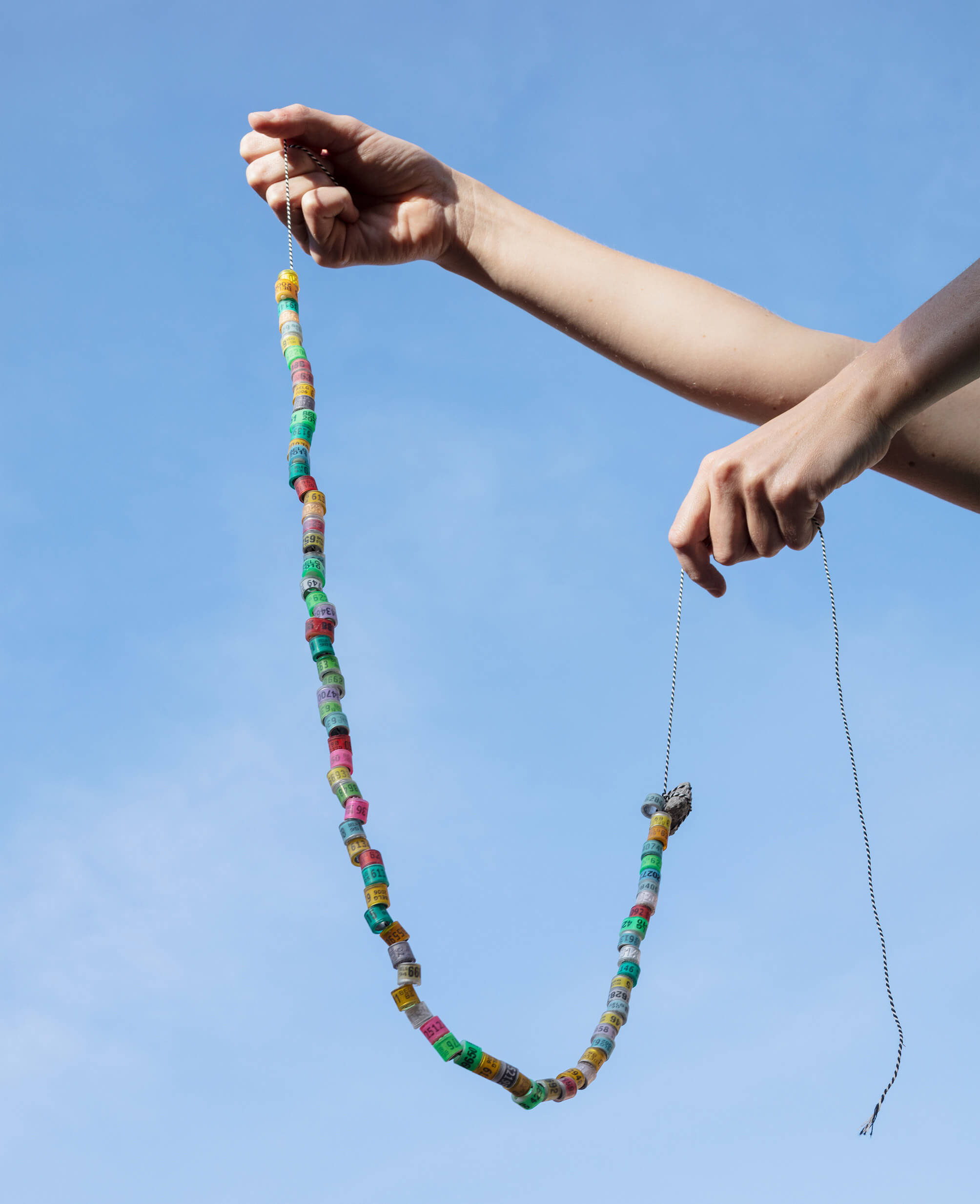
_44A6588.dng
At 13:26:43 I took a photograph of a concrete building without windows in an industrial zone just south of Brussels.
_44A6590.dng
At 16:46:15 I photographed a succession of office buildings in the same industrial zone.
_44A6589.dng
I must have walked about 1 kilometer between the concrete building without windows and the section of the industrial zone with the offices. At 13:43:49, the camera, safely stored in my backpack, recorded 0.4 seconds of the 20 minutes it took me to get there.
In The Snows of Venice, Alexander Kluge wonders whether he can take the liberty to conjure up what the sky looked like on 31 December 1799, as Schiller made his way to Goethe’s house. He goes on by saying that, historically, there’s a ‘LACK OF SENSORY ATTENTION AT CRUCIAL MOMENTS’.1 There are exceptions, though, like the cameraman that was sent out to document the fireworks on New Year’s Day 2000. The camera was turned on prematurely. The batteries were used up by midnight, but ‘certain gray tones, however, filtered through the cracks of its protective case, conveyed the motion of the walking cameraman, the transportation. The incompletely shut, low-information container was documented exactly […] To this day it provides inexact testimony as to the qualities of the leather of a twenty-first century carrying case and the precise sensitivity to light and dark demonstrated by a twenty-first century recording medium.’2
Lerner, B., Kluge, A. The Snows of Venice. Leipzig: Spector Books, 2018, p. 53
Ibid.

Because an acquaintance of the family was a missionary, the postage stamp collection had a large quantity of stamps from the Philippines. You had to boil water, hold the empty envelope above it, wait until the glue and the missionary’s saliva loosened and evaporated, and then gently peel off the stamp. Then, it was put on a piece of pink blotting paper. Once dry, the stamp was slid into a tailor-made booklet.
Between a Horta building’s facade and King Baudouin’s portrait, there are exotic fish, religious scenes, butterflies, and advertisements for NGOs.
Mango is the Philippines’ national fruit. Pope John Paul II visited it in 1995. There was a guerrilla unit in Northwest Pampanga during WWII.
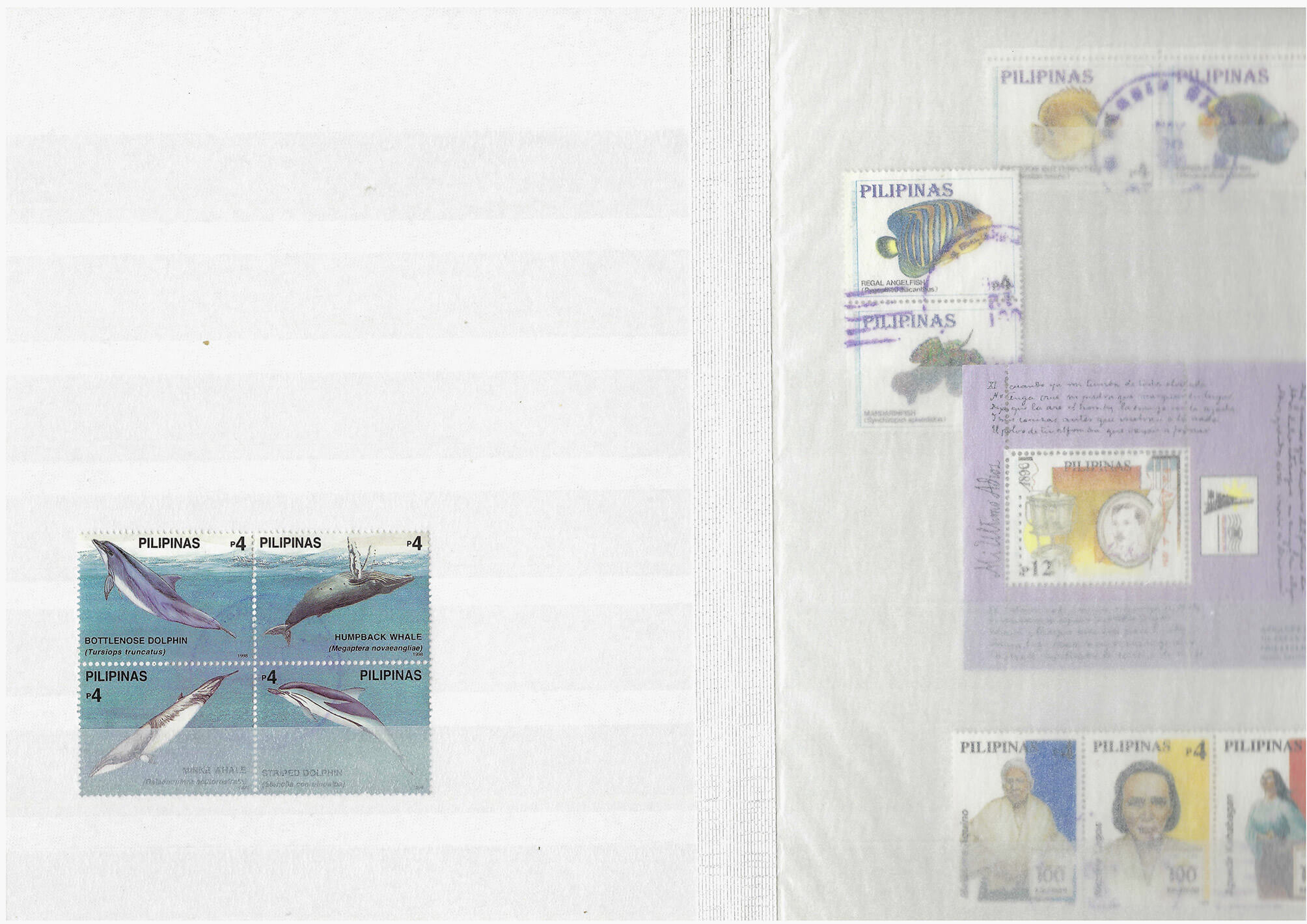
The archive of O. Clemminck, architect, was preserved in a box of croutons – by him, the historian who gave it to my father, or someone else (it contains a letter written by Clemminck’s widow asking a client to pay the bill her husband had sent). The croutons had a flavor of fine herbs and, a stamp on the box with the plans in it says, should have been consumed before April 1987.
